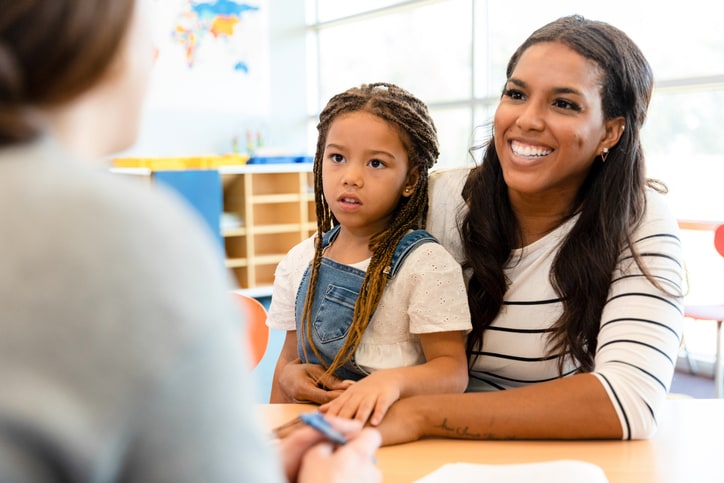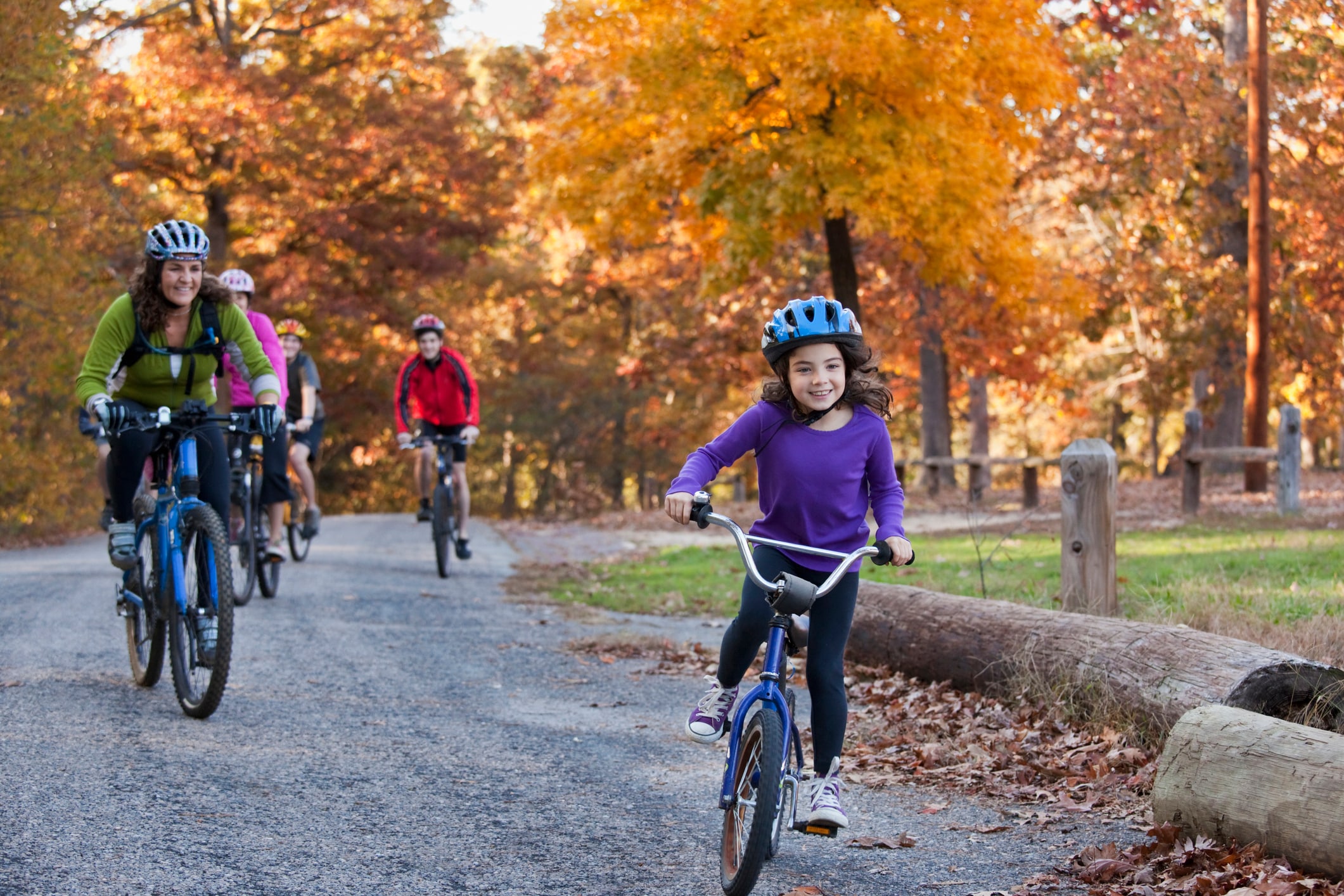While challenges vary from state to state, LGBTQIA+ youth face incredible restrictions when it comes to the medical care they need and the education they deserve. The combination of negative news cycles and unsafe environments is having a negative impact on the mental health of LGBTQIA+ students. It’s also emboldening people who are vocally opposed to support for queer youth.
According to GLSEN’s 2021 National School Climate Survey, 81% of queer students reported in-person harassment or assault. They also noted that resources and support had declined significantly since 2019. The Trevor Project’s 2023 U.S. National Survey on the Mental Health of LGBTQ Youth People listed a few examples of what some queer students face at school: They’re denied the ability to dress in a way that fits their gender or gender expression, disciplined for fighting back against bullies and experience unwanted sexual contact.
Parents of queer kids need to advocate for their children at school, even when it feels overwhelming. A parent’s job is to do everything they can to make sure their children are safe and affirmed. The same can be said for people who choose to work with children. Here are actions both parents and educators can take to advocate for queer students.
Know the challenges LGBTQIA+ students face
Ash Beckham (she/her), an equality advocate, workplace expert and author of “Step Up: How to Live with Courage and Become an Everyday Leader,” says that queer students contend with challenges related to peers, academics, administrators and school policies.
“Peer challenges range from lack of understanding to bullying,” explains Beckham. “Academic challenges can look like a lack of historical figures and role models and representation. Administrative challenges could take the form of under-trained and/or under-resourced teachers and staff. Policy challenges involve local, state or federal laws that target LGBTQIA+ instruction, expression and discussion.”
These can look different in elementary school vs. high school settings.
Challenges in elementary school
In elementary school, kids face a lack of inclusive language, peers repeating negative language about the LGBTQIA+ community they may hear at home and bullying done based on gender stereotypes. These issues can be preempted when adults — parents and educators — talk early and often to all kids about diversity and inclusion.
“Often, teachers and administrators are so afraid to say something wrong they end up saying nothing,” says Beckham. “This in turn makes the students feel more isolated and alone.”
Elementary school students often carry the burden of explaining themselves to peers and teachers, she explains. They struggle with the weight of not seeing themselves in the curriculum while justifying why they’re different.
Challenges in junior high and high school
Heather Hester (she/her) says her son knew he was gay in seventh grade. He lost friends in eighth grade and fell into a depression. “High school is a beast of its own,” says Hester of her family’s experience. “Bullying is a huge issue at this level. The intensity just increases from junior high level.” She adds that bullying can be both in person and online.
The impact of peers is much more substantial as students get older, points out Beckham. Hormones, sexuality and interpersonal dynamics take center stage and teens who are seen as “different” — not straight or cisgender — can be ridiculed for standing out. This is in part the fault of parents and educators. “Without education and inclusion initiatives, non-LGBTQIA+ students are also under-resourced in learning about diversity,” says Beckham. “We do not expect our students to comprehend algebra without classroom education. Understanding diversity is no different.”
A lack of intentional inclusivity can also mean that sexual health lessons are not taught in a way that supports all genders and relationships. This puts LGBTQIA+ at risk for more harm.
Older queer students are also more aware of books being removed from classrooms and libraries due to bans, protests at school boards and a lack of Pride flags and pronoun pins — all of which are important pieces of representation and signs of allyship.
What parents can do to advocate for their students
It can be overwhelming and scary at times to send a queer child into an environment that won’t always love and care for them the way they need and deserve. Parents often need to be their child’s biggest advocate when it comes to school settings. Here’s how to get started.
Create support systems
“We can’t change people, but [allies] can change our approach and our response,” says Hester. Part of that approach is to be sure LGBTQIA+ students have support systems in place at school, she says. One of the best things you can do while advocating for your child: build a strong relationship with the people at school who will support your child. This could be a trusted teacher, administrator or counselor where a queer student can go for comfort and advice.
You might also encourage your child to start a Pride club or Gay Straight Alliance (GSA), which can serve as a valuable network of support. While clubs or groups are usually founded by students, they are often facilitated by a teacher or staff member at the school. GLSEN offers resources on how to start a GSA at school. It’s important to remove any barrier that may require a student to join, such as a permission slip from a parent or caregiver. This promotes advocacy for other LGBTQIA+ students who may not have support at home.
“If you are the parent of a LGBTQIA+ child, the best and most effective way to advocate for your child is to get involved in your child’s school.”
— Danielle Silverman (she/her), a licensed clinical social worker
Change policy and administration practices
It’s also crucial that parents work to change the systems and policies at schools.
“If you are the parent of a LGBTQIA+ child, the best and most effective way to advocate for your child is to get involved in your child’s school,” says Danielle Silverman (she/her), a licensed clinical social worker who holds her Masters in Education.
Silverman encourages parents who want to do this to show up to school board meetings. “Even in [states where laws aren’t targeting LGBTQIA+ youth], school board meetings hotly debate age-appropriate, inclusive sex education across all school levels,” she notes. “These conversations typically include whether gender identity and sexual orientation should even be discussed at school.”
Beckham is also very clear about what parents should request (and expect) of their kids’ schools and classrooms:
- Teacher and administrative training regarding the specific challenges and concerns of LGBTQIA+ youth. Often a local Pride center or a place like GLSEN can offer support.
- A comprehensive and enforced anti-bullying policy. Parents may need to work with the community and school board to get this in place.
- A connection from school to local LGBTQIA+ mental health and social services.
- Community-based forums that offer education to people to better support LGBTQIA+ students.
- Inclusive curriculum, including LGBTQIA+ history and sexual education.
- Presence of gender neutral bathrooms.
These expectations may take more effort and community building. To that end, Silverman encourages parents to organize allies and other parents of LGBTQIA+ students (if it doesn’t risk outing them) to write letters to district superintendents and school principals to encourage them to support these types of initiatives. Educators and school board members are more likely to implement changes that support LGBTQIA+ students when there are many voices who will support them, Silverman adds.
What parents should expect of educators when it comes to making classrooms LGBTQIA+ inclusive
Educators are just as instrumental in the advocacy of LGBTQIA+ students as parents.Whether or not a district has a clear policy in place regarding diversity and inclusion, educators can still make their classrooms safe and affirming — even if they are working around policies in opposition of queer youth. Parents need to talk to their child’s teacher and remind them of resources they may not be receiving from their administration.
The Centers for Disease Control and Prevention (CDC) and the Human Rights Campaign Foundation’s Welcoming Schools both offer classroom and curriculum guidance that educators can access for free.
“Anti-queer legislation is a significant issue and has shaped my approach to teaching, pushing me to foster a more inclusive, compassionate and productive classroom,” says Jennifer Kropf (she/her), educator and Editorial Director of Healthy Happy Impactful.
In the face of restrictions or resistance to inclusive curriculum, Kropf works to tweak the presentation of the content to be sure she is still offering lessons that speak to all students. She also says that teachers can’t burden students to be educators while at school. “It’s not fair to expect our LGBTQ+ students to teach their peers (or us) about their experiences,” she says. “It’s on us, the teachers, to learn and grow, maintaining an inclusive classroom.”
Educators also need to take it upon themselves to learn and attend training about LGBTQIA+ topics even if they’re not offered or mandatory by their school, she notes.
“The classroom is a place for students to practice, to fail, to learn. That is no difference if you are talking about chemistry or pronouns.”
— Ash Beckham (she/her), an equality advocate
The use of inclusive language is also necessary, points out Beckham. By using direct and matter-of-fact language, inclusive language educators are making space for all students to see themselves in the classroom. “The classroom is a place for students to practice, to fail, to learn,” she says. “That is no difference if you are talking about chemistry or pronouns. At its most core, authenticity is not political.”
Kropf reminds educators of this: “In our profession, there’s a promise of making a difference, and it’s something we must strive to fulfill. Regardless of societal currents, we’ve got to stand firm, leading our students towards a future of understanding, acceptance and equality.”
All students are better off when their physical and emotional needs are met, and when we talk about equitable learning spaces for all students, we also need to be sure to include LGBTQIA+ kids. Parents and caregivers can take steps to create change and more affirming classrooms for their kids. It will take collaboration with your child’s school, but the time and energy will pay off when your student feels good about being in class.





